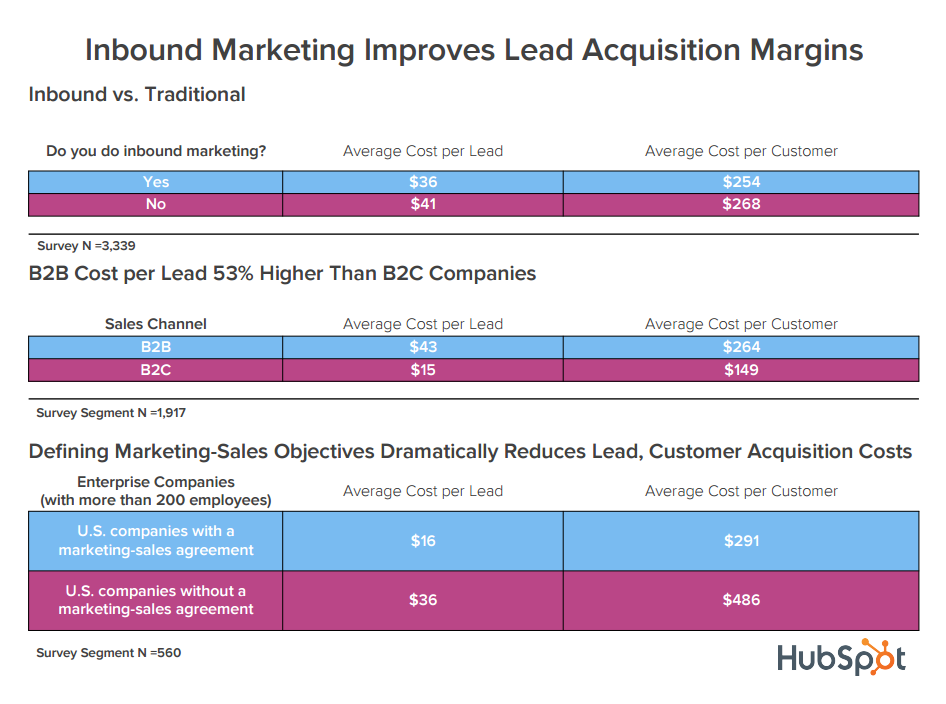In the same spirit as the old saying, “you can catch more flies with honey…,” inbound marketing can increase return on investment at a greater rate than traditional marketing. Informative, educational content can attract a captive audience for businesses to leverage. In the debate over attracting vs interrupting, inbound’s new soft-sell strategies are beginning to trump old intrusive outbound marketing tactics.
Attracting vs interrupting: Marketing opposites oppose
In the battle to win customers, marketers traditionally focused their efforts on gaining public attention by interrupting people at any and every opportunity. Inbound marketers are the polar opposite. The inbound philosophy meets customers where they already are spending their time. By developing an audience, pools of leads can be converted into sales. “Engaging consumers is no longer about pushing out interruptive messages,” said HubSpot CMO Mike Volpe. “It’s about connecting with people in the places and on the devices they prefer. It’s about integrating content and context for a richer, relevant, and personalized experience, from the time someone first hears about your brand to the point they’re buying your product and telling their friends about it.”
Cheap attention
When debating attracting vs interrupting, the high cost of creating and placing traditional marketing materials is a major factor. Inbound marketing presents an effective alternative at a fraction of the cost. According to HubSpot’s State of Inbound 2014, inbound marketing’s average cost-per-lead is lower for business-to-business companies of all sizes.
The rules of attraction
Inbound marketing revolves around the customer-centric principle of the lead finding the company rather than traditional marketing outreach. With targeted content, inbound organically attracts a pool of high-quality leads. With informative blogs, videos and social posts, customers spend more time engaged with a brand than a traditional ad. The longer a product or service remains in a consumer’s mind, the greater the opportunity to convert a sale.
Smoother communication
Inbound is also more conversational by nature. Social media has created a new, faster communication loop that gives inbound marketers a real advantage over outbound marketers. With each Facebook post or Instagram like, people become more engaged and invested than if thumbing through direct mail. Open communication channels can delight customers and transform them into advocates.
Stronger prospects
Prospects developed through inbound marketing can be stronger than traditional marketing. Inbound leads are more likely to purchase your goods or services, because they found the business themselves. The educational information provided also empowers consumers to make their own choices. The education of customers through content can quickly move customers from one stage of the buyer’s journey to another in a way traditional marketing cannot.
Easier to convert
Since it’s easier to persuade the already interested, inbound enjoys a greater conversion rate over traditional marketing. According to the Search Engine Journal, SEO leads boast a 14.6 percent close rate, while outbound leads have just a 1.7 close rate.
Attracting vs interrupting: Can old and gray keep up with the new kid?
In the debate between attracting vs interrupting, outbound marketing is like the established, graying front-runner. But as the digital landscape continues to change, inbound marketing is gaining on traditional marketing. According to HubSpot, today 80 percent of business decision-makers prefer to get company information via a series of articles rather than an advertisement. Consider joining this growing digital marketing revolution today by learning more about inbound marketing.

